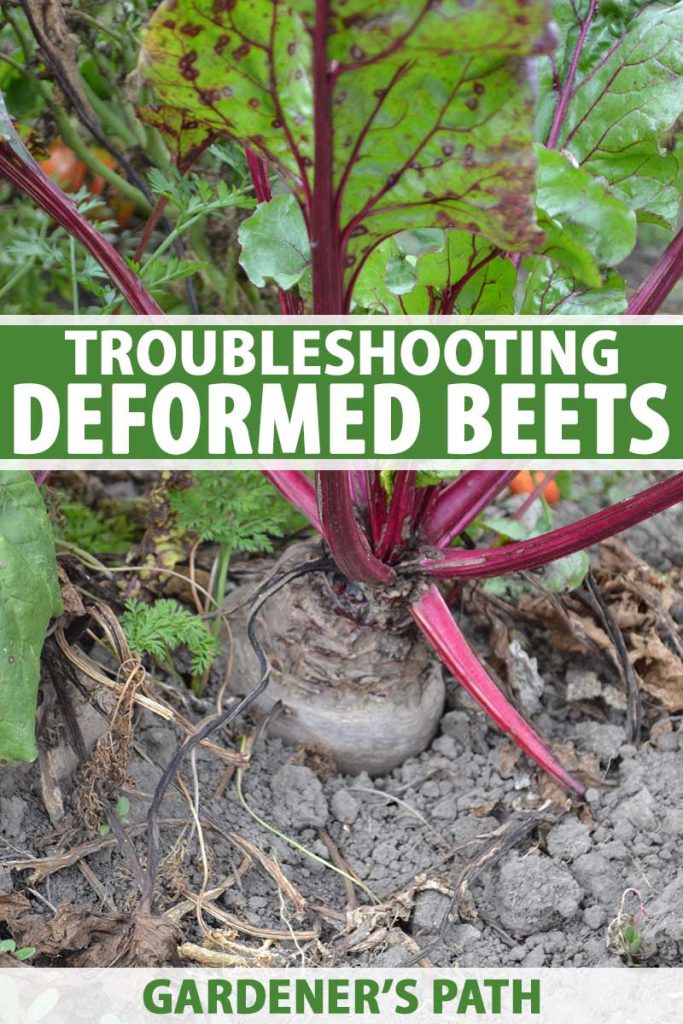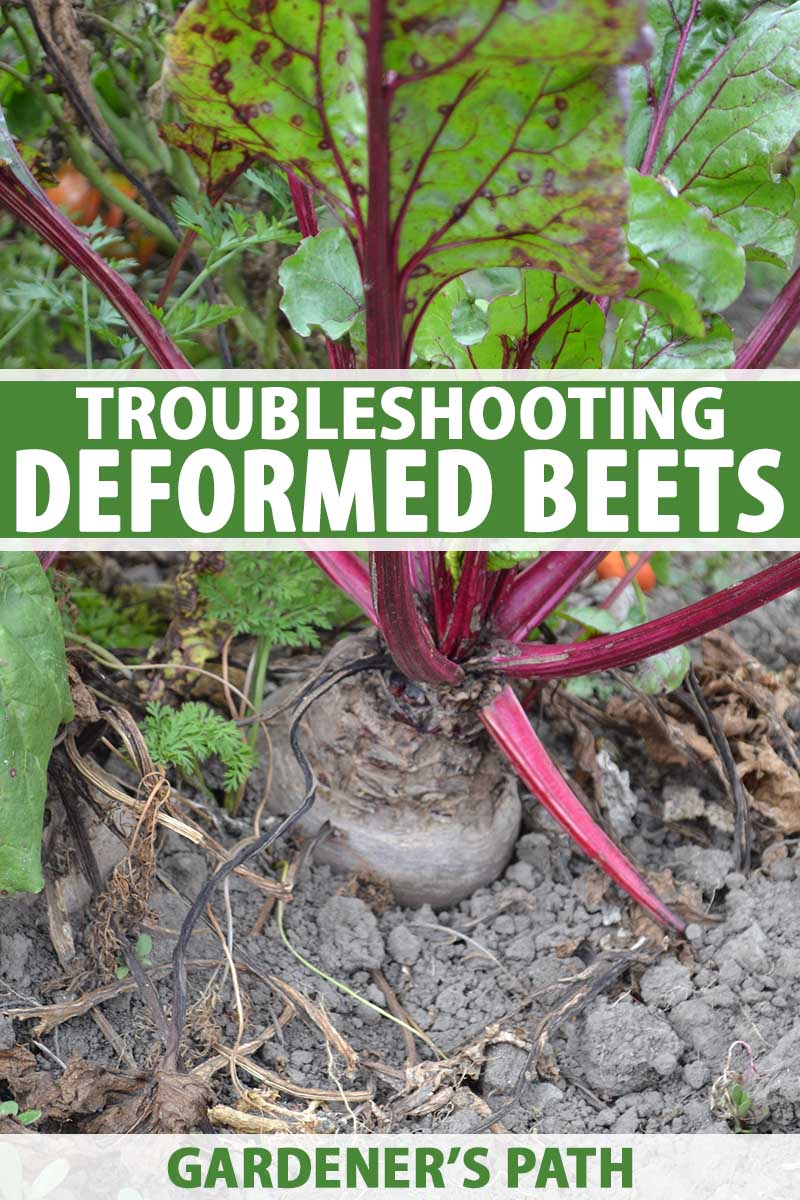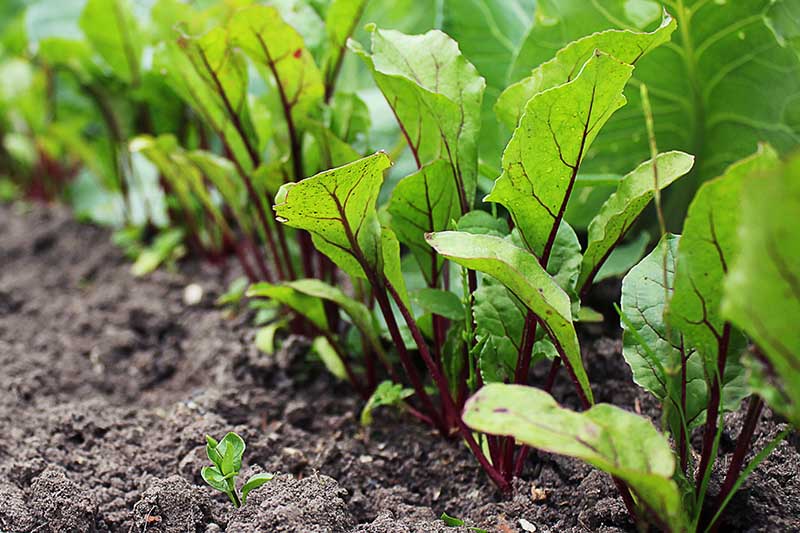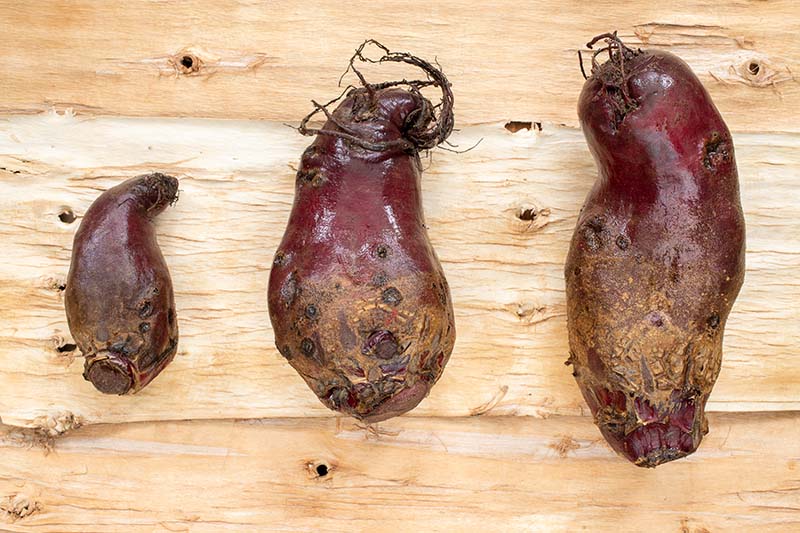You work for weeks or months to nurture those little seedlings into hopefully vigorous roots. In the end, you’re rewarded with a crop of vibrant veggies that you believed all along were there, even though you couldn’t see them. At least, that’s what happens when everything goes according to plan. In the real world, this process isn’t always so perfect. Sometimes things go wrong, and when you shovel up your harvest from the earth, you may find that your beets weren’t growing as you’d expected under that little blanket of soil. We link to vendors to help you find relevant products. If you buy from one of our links, we may earn a commission. Sometimes, that’s the mystery of root crops. But we hope to shed some light on the situation so you can set yourself up for a rewarding harvest rather than a disappointing one. Here’s what’s ahead: I know it’s frustrating to put all that effort in, only to be denied the crop you’d planned on. The good news is, if you make a mistake and you’re able to learn from it, you rarely have to deal with the same issue again. Get ready to learn all about why your beets were deformed or small, and what to do about it.
A Bit About Beets
Beets are one of those plants that even the newest gardener can often master. Perhaps that’s why it’s so annoying when they don’t turn out like you expected.
You hear about how simple they are to grow, only to discover that you failed at it – which might make you question this whole gardening endeavor. Trust me, I’ve been there. But part of what makes gardening so rewarding is learning and overcoming obstacles. So, let’s talk about fundamentals. Beets need about 60 days to mature, depending on the variety, which means there isn’t a lot of time for things to go wrong. But it also means you don’t have much time to fix the problem if something isn’t right. In order to be successful, you need to prepare well and keep a close eye on things. To give yourself a fighting chance, check out our article on how to grow beets for all the best advice. If you’re growing your beets in a container, not to worry, we have you covered there, too. Essentially, beets like cool weather, well-draining and loose soil, and lots of sun. Many problems can be avoided if you take the time to set your garden up for success before you put the first seed in the soil.
Reasons for Healthy Tops with Small or Deformed Roots
It’s aggravating when a plant looks perfectly happy, but below ground, there’s trouble brewing.
You can’t do anything to fix the situation, since you don’t know there’s a problem in the first place. If everything looks good above ground, but your beets look surprisingly small when you harvest them, there are a few common potential culprits:
Crowding
If your beets were planted too close together, the roots won’t be able to spread. Imagine a big, round beet as it gradually matures, only it bumps up against its neighbor with nowhere else to grow. I know it’s tempting to try and squeeze in as many plants as possible into a space, but you need to give beets plenty of room. You should sow your seeds or transplant seedlings with at least three inches between them and 12 inches between rows.
Compacted Soil
If your soil is too compacted, just as with crowded plants, your beets won’t be able to expand as they grow. That’s why it’s imperative to work in some well-rotted compost or manure to the planting area if you are working with clay or hard soil. Truper Tru Tough Spading Fork A little bit of prep work will go a long way.
Nutrient Deficiency
Beets need lots of phosphorus to grow to the mature size that you’re aiming for. If they don’t have enough, they may grow healthy-looking tops with underdeveloped roots. Test your soil before planting and if you find that it’s deficient, work some bone meal into the soil, following the manufacturer’s directions. A phosphorus deficiency is far less common than overcrowding and compacted soil, so don’t just assume that’s the problem and toss some fertilizer at it. This can cause a host of other problems.
Rocks
If you have rocky soil, your beets may be forced to grow around any rock that’s in the way. This can cause them to have smaller size at maturity than what they could have attained in more suitable soil, or it can cause them to grow in odd shapes. To avoid this, be sure to dig down nine inches into the soil and remove any rocks you can find before planting.
Troubleshooting Small or Deformed Roots and Unhealthy Greens
Sometimes you will see evidence of a problem both below and above ground. The good news about finding deformed roots along with obviously unhealthy greens above ground is that you are likely to observe that something is wrong more quickly, before it’s time to harvest.
You may also have enough time to fix the problem before it’s too late for your roots.
Not Enough Sun
Beets benefit from plenty of sun, and if they don’t get enough, their roots can be malformed. Usually, the tops will be smaller than usual and they may also be leggy or lighter in color. The fix, of course, is to plant your beets where they can get at least six hours of light per day. This is one of those situations that you may be able to address if you notice the problem soon enough. If you planted near a tree or bush that filled out as the season progressed, you can prune the plant back to restore light access to your garden. If your beets are growing in a container, move it to a better spot.
Acidic Soil
Beets prefer slightly alkaline or neutral soil. If the pH drops below 6.5, the acidity can cause phosphorus to become less available, resulting in misshapen roots. If your beets also develop red or purplish tips on the leaves, that’s a definite sign that you need to test your soil and adjust the pH accordingly. You can make your soil more alkaline by adding lime according to the recommendations in your test results or on the package.
Not Enough Water
If you notice cracks in your beet roots, it likely means that they didn’t get enough water at the right time. If they experienced any drought while growing or inconsistent water, cracking often results. You may be able to see if your plants are struggling with dehydration if you notice the tops starting to droop or turn yellow. To avoid this, be sure to give plants water regularly and don’t let them dry out completely. The soil should feel moist, like a well-wrung-out sponge. If you stick your finger in the dirt and it feels dry past one inch, it’s time to get out the hose. Water at the soil level rather than sprinkling the foliage.
Pests and Diseases to Watch For
On top of these common planting issues, deformed or small roots can be the result of an insect infestation or disease.
Insects
We have an entire guide dedicated to figuring out what’s bugging your beet plants and how to deal with it , so we’ll just touch on what to watch for here.
Aphids
If the tops of your beets seem to be stunted, along with the roots themselves, get out your magnifying glass and look for aphids. There are a handful of aphids from the Myzus and Aphis genera that will attack beets, and in large enough numbers, all of them can stunt growth. Look for tiny green, brown, yellow, or tan insects congregating on the underside of leaves.
Nematodes
When it comes to small or deformed beets, if you’ve checked everything else out, you may have nematodes (Meloidogyne) in your soil. Nematodes can cause the roots to be stunted, hairy, and/or small.
Disease
Beets may suffer from several types of diseases, but there are two in particular to watch for that can cause roots to be stunted or misshapen. Check out our guide to beet diseases to learn more.
Downy Mildew
Downy mildew can cause roots to be misshapen and to have rough skin. Downy mildew is caused by the water mold or oomycete Peronospora farinosa. Above ground, you’ll notice gray mold on leaves and large, light green spots.
Root Rot
Root rot causes roots to be misshapen or to have a dry, black center.
Don’t Be Afraid to Dig In!
Unless a disease or pest has ruined your roots, don’t be afraid to cook up those spindly or quirky beets. They may not be the picture perfect veggies that you imagined, but most of the time they will still taste just as good.
Don’t let a negative experience turn you off of beet gardening, either. Look at this experience as a learning opportunity and try again next year (or later in the same year, if you have enough growing time left). Be sure to come back here and share your own experiences in the comments below, so future beet growers can learn too! And for more information about growing beets in your garden, check out these guides next:
How to Harvest Beets How to Harvest Beet Greens Top 17 Beet Varieties to Grow this Season
© Ask the Experts, LLC. ALL RIGHTS RESERVED. See our TOS for more details. Uncredited photos: Shutterstock.






